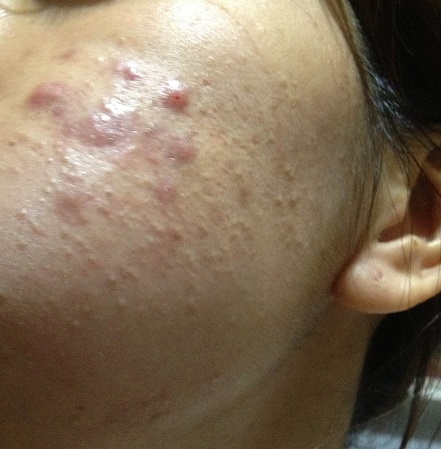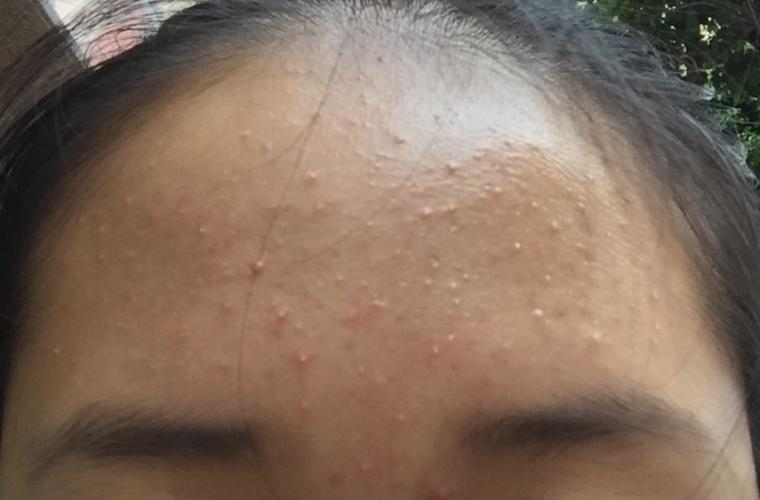Comprehensive Folliculitis On Face Treatment Guide
Comprehensive Folliculitis On Face Treatment Guide
At [Your Website Name], we understand the frustration and embarrassment that comes with having folliculitis on your face. This common skin condition can be not only physically uncomfortable but also emotionally distressing. We're here to provide you with a comprehensive guide on folliculitis on the face treatment, equipping you with the knowledge you need to effectively manage and overcome this condition. Let's dive right in!
Understanding Folliculitis on the Face
Folliculitis is a skin condition that occurs when hair follicles become inflamed and infected. It can affect various parts of the body, including the face. While it may resemble acne, folliculitis is caused by different factors. Common symptoms of facial folliculitis include red, itchy, and sometimes pus-filled bumps that can be both painful and unsightly.
Folliculitis on the face is a skin condition that primarily affects the hair follicles in this region. It shares some similarities with acne, but it is important to note that the causes and treatment approaches can be different. Here's a clearer breakdown:
- Inflammation and Infection: Folliculitis occurs when the hair follicles on the face become inflamed and infected. This inflammation can result from various factors, including bacteria, fungi, or even physical irritation. Staphylococcus aureus is a common bacterium responsible for facial folliculitis.
- Distinctive Appearance: The hallmark of facial folliculitis is the presence of small, red bumps or pustules around hair follicles. These bumps can be similar in appearance to acne pimples, which is why they are sometimes confused. However, folliculitis tends to be more localized around individual hair follicles.
- Itchiness and Discomfort: Folliculitis on the face can be itchy and uncomfortable. The irritation and itching can be bothersome and may lead to scratching, which can worsen the condition and potentially introduce more bacteria.
- Potential for Pus: In some cases, the red bumps associated with facial folliculitis may develop into pus-filled pustules. These can be painful and are often a sign of a bacterial infection.
- Common Areas of Occurrence: Facial folliculitis often occurs in areas where you have hair follicles, such as the beard area in men, the upper lip, and the forehead. It can also affect the nose and cheeks.
- Different Causes: Unlike acne, which is primarily driven by hormonal factors and excess oil production, folliculitis can have various causes. These include bacterial infections, fungal infections, physical trauma (like shaving or friction), or even the use of certain skincare products that may clog or irritate the hair follicles.
- Treatment Tailored to the Cause: Effective treatment for facial folliculitis depends on identifying the underlying cause. If it's bacterial, antibiotics may be prescribed. For fungal folliculitis, antifungal treatments are necessary. Additionally, managing contributing factors such as excessive oil production or ingrown hairs can also be part of the treatment plan.
Facial folliculitis is a skin condition characterized by inflamed and infected hair follicles on the face. While it can resemble acne, it has distinct causes and requires tailored treatment approaches. If you suspect you have facial folliculitis or are experiencing persistent symptoms, consulting a dermatologist is advisable to determine the specific cause and receive appropriate care.
Causes of Facial Folliculitis
Several factors can contribute to the development of folliculitis on the face, including:
- Bacterial Infection: One of the primary causes of facial folliculitis is a bacterial infection. Staphylococcus aureus is often responsible for these infections.
- Ingrown Hairs: Ingrown hairs, a result of hair follicles becoming trapped beneath the skin's surface, can lead to folliculitis.
- Excessive Oil Production: Overproduction of sebum (skin oil) can clog hair follicles and promote bacterial growth.
- Sweating and Friction: Activities that cause sweating and friction on the face, such as wearing helmets or tight clothing, can exacerbate folliculitis.
Effective Treatment Options
Now that we've gained a better understanding of what facial folliculitis is and what causes it, let's explore some effective treatment options.
1. Maintain Good Facial Hygiene
Proper facial hygiene is crucial in preventing and treating folliculitis. Cleanse your face gently with a mild, fragrance-free cleanser. Avoid harsh scrubbing, as it can further irritate the skin.
2. Warm Compresses
Apply warm compresses to the affected areas for about 15-20 minutes, several times a day. This helps soothe inflammation and promote the drainage of any pus-filled bumps.
3. Topical Antibiotics
For cases of bacterial folliculitis, your dermatologist may prescribe topical antibiotics. These medications can effectively combat the infection and reduce inflammation.
4. Oral Antibiotics
In more severe cases, oral antibiotics may be necessary. These are often prescribed for a longer duration to ensure complete eradication of the infection.
5. Laser Hair Removal
For individuals prone to recurrent folliculitis due to ingrown hairs, laser hair removal can be a long-term solution. It helps permanently reduce hair growth, minimizing the chances of hair becoming trapped.
6. Avoid Triggers
Identify and avoid factors that exacerbate your folliculitis, such as tight clothing, helmet use, or excessive sweating.
7. Seek Professional Advice
If your folliculitis persists or worsens despite home treatments, consult a dermatologist. They can provide personalized treatment recommendations tailored to your specific condition.
Preventing Future Breakouts
Preventing future breakouts of folliculitis on the face is essential for long-term management.
1. Regularly Cleanse and Exfoliate
Incorporate a gentle exfoliation routine to prevent the buildup of dead skin cells that can contribute to folliculitis.
2. Use Non-Comedogenic Products
Choose skincare and makeup products labeled as "non-comedogenic" to avoid clogging pores.
3. Avoid Sharing Personal Items
Sharing towels, razors, or other personal items can spread bacteria, so avoid sharing whenever possible.
4. Stay Hydrated and Eat a Balanced Diet
Proper hydration and a well-balanced diet can contribute to overall skin health.
Conclusion
Facial folliculitis can be a bothersome condition, but with the right knowledge and treatment, you can manage and even prevent future breakouts. Remember, consistency in your skincare routine and seeking professional advice when needed are key to achieving clear and healthy skin.
Hair and hair disease information with answers to common questions treatment details book reviews web links and more. Clusters of small red bumps or white headed pimples that develop around hair follicles.
Folliculitis signs and symptoms include.
- Red Bumps: Folliculitis often presents as small, red bumps or pustules at the base of hair follicles. These bumps can be itchy and uncomfortable.
- Pus-filled Pimples: In some cases, the red bumps may become filled with pus, resembling whiteheads. This can lead to tenderness and pain in the affected areas.
- Itching and Discomfort: Folliculitis can cause itching and a general feeling of discomfort on the skin. Scratching the affected areas can worsen the condition.
- Clusters of Bumps: Folliculitis can occur in clusters, especially in areas where hair is dense, such as the scalp, beard area, or groin.
- Hair Loss: In severe cases or with recurrent folliculitis, hair loss may occur in the affected areas.
- Redness and Swelling: The affected skin may appear red and swollen around the hair follicles.
- Tenderness: Folliculitis can be tender to the touch, especially when the bumps or pustules are inflamed.
Folliculitis on face treatment
This is a free 50 page guide. It may be folliculitis a common skin disorder. How to treat folliculitis.
Infection of the hair follicles is called folliculitis. Treatment of body folliculitis folliculitis solution body wash 60 oz 180 ml. Folliculitis types include.
Folliculitis inflammation of the hair follicles that may develop into a bacterial or fungal infection usually manifests as an itchy. Here's what you need to know. Authoritative facts about the skin from Dermnet New Zealand.
Read about folliculitis causes symptoms home remedies treatment and prevention. What is it what causes it and what are the risk factors. How is folliculitis diagnosed and can it be prevented.
Pus filled blisters that break open. Everything you need to know about how to treat malassezia folliculitis fungal acne related conditions. Do you have pinkish red or white pus filled bumps that itch intensely.
In this article learn about folliculitis.
Skin Conditions That Look Like Acne But Aren T
 Pityrosporum Folliculitis Diagnosis And Management In 6 Female
Pityrosporum Folliculitis Diagnosis And Management In 6 Female
Folliculitis Treatment Causes Symptoms Home Remedies
 Help Pityrosporum Folliculitis Or Closed Comedones General Acne
Help Pityrosporum Folliculitis Or Closed Comedones General Acne

